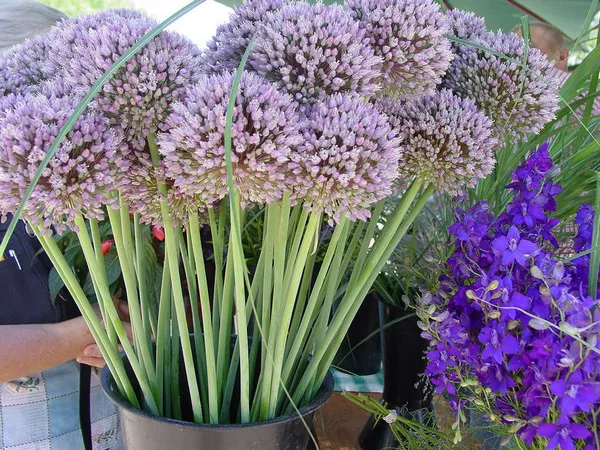Nasturtiums, with their vibrant hues and delicate blooms, are beloved flowers that captivate gardeners and enthusiasts around the world. Known for their striking appearance and versatility, nasturtium flowers have long been cherished for their ornamental value, culinary uses, and medicinal properties. In this comprehensive exploration, we delve into the world of nasturtium flowers, uncovering their fascinating characteristics, cultivation techniques, and myriad of uses.
Understanding Nasturtium Flowers
Nasturtiums, scientifically known as Tropaeolum majus, are annual flowering plants native to South America. These charming flowers belong to the Tropaeolaceae family and are characterized by their round, shield-shaped leaves and vibrant, trumpet-shaped blooms. Nasturtium flowers come in a range of colors, including fiery oranges, sunny yellows, and rich reds, adding a burst of color to gardens, landscapes, and culinary creations.
Cultivation and Care of Nasturtium Flowers
Nasturtium flowers are relatively easy to grow and are well-suited to a variety of growing conditions. They thrive in full sun to partial shade and prefer well-drained soil with moderate moisture levels. Nasturtium seeds can be sown directly in the garden after the threat of frost has passed, or started indoors several weeks before the last frost date. Once established, nasturtium plants require minimal maintenance, making them ideal for novice and experienced gardeners alike.
Nasturtium flowers can be grown in containers, hanging baskets, or directly in the ground, making them versatile additions to any garden or landscape design. Their trailing habit and cascading blooms make them perfect for edging pathways, spilling over retaining walls, or adorning trellises and arbors. With proper care and attention, nasturtium flowers will reward growers with months of vibrant color and lush foliage throughout the growing season.
Culinary Uses of Nasturtium Flowers
Beyond their ornamental value, nasturtium flowers are prized for their culinary uses and unique flavor profile. Both the flowers and leaves of nasturtium plants are edible and can be used to add a peppery, slightly spicy kick to salads, sandwiches, and other dishes. The vibrant colors of nasturtium flowers make them popular garnishes for appetizers, entrees, and desserts, adding visual appeal and a hint of zesty flavor to culinary creations.
Nasturtium flowers can also be infused into oils, vinegars, and syrups, imparting their distinct flavor and aroma to homemade condiments and dressings. Additionally, nasturtium seeds, known as “poor man’s capers,” can be harvested and pickled to create a flavorful and unique condiment reminiscent of traditional capers. Whether used fresh, dried, or preserved, nasturtium flowers offer endless culinary possibilities for adventurous cooks and chefs.
See Also: What flower symbolizes prosperity?
Medicinal Properties of Nasturtium Flowers
In addition to their culinary uses, nasturtium flowers possess medicinal properties that have been valued for centuries. Nasturtiums are rich in vitamin C and other antioxidants, making them beneficial for boosting immune function and supporting overall health and wellness. The antimicrobial and anti-inflammatory properties of nasturtium flowers have also been studied for their potential therapeutic effects on various health conditions.
Nasturtium flowers have been traditionally used in herbal medicine to treat respiratory infections, urinary tract infections, and digestive disorders. Infusions and decoctions made from nasturtium flowers were believed to have diuretic, expectorant, and antiseptic properties, making them valuable remedies for promoting respiratory and urinary health. While more research is needed to fully understand the medicinal benefits of nasturtium flowers, their long history of use in traditional medicine speaks to their potential as natural remedies for common ailments.
Companion Planting with Nasturtium Flowers
Nasturtium flowers are not only beautiful and flavorful but also beneficial for attracting beneficial insects and repelling garden pests. Companion planting with nasturtiums can help protect neighboring plants from common pests such as aphids, whiteflies, and cabbage moths. The pungent scent of nasturtium flowers acts as a natural insect repellent, deterring pests and reducing the need for chemical pesticides.
Nasturtiums also attract pollinators such as bees, butterflies, and hummingbirds, enhancing biodiversity and promoting ecosystem health in the garden. Their nectar-rich blooms provide a valuable food source for pollinating insects, helping to support populations of beneficial wildlife. By incorporating nasturtium flowers into garden designs, growers can create vibrant, biodiverse habitats that foster a healthy balance of plant and animal life.
Nasturtium Flowers in Folklore and Culture
Throughout history, nasturtium flowers have been celebrated in folklore, art, and cultural traditions around the world. In Victorian England, nasturtiums were associated with patriotism and victory, symbolizing courage, resilience, and triumph over adversity. The fiery hues of nasturtium flowers were often used in floral arrangements and bouquets to convey messages of strength and determination.
In Peruvian culture, nasturtium flowers are used in traditional celebrations and festivals, symbolizing abundance, prosperity, and good fortune. Nasturtiums are often incorporated into ceremonial offerings and decorations, reflecting their significance as symbols of luck and prosperity.
In contemporary culture, nasturtium flowers continue to inspire artists, writers, and gardeners with their beauty and versatility. Their vibrant colors and unique flavor profile make them popular subjects for paintings, photographs, and culinary creations. Nasturtiums are also featured in garden tours, botanical gardens, and horticultural exhibitions, where their stunning blooms and cascading foliage captivate audiences of all ages.
Conclusion
In conclusion, nasturtium flowers are cherished for their beauty, flavor, and versatility, making them beloved additions to gardens, landscapes, and culinary creations worldwide. From their vibrant hues and delicate blooms to their peppery flavor and medicinal properties, nasturtiums offer a wealth of benefits for gardeners, chefs, and herbalists alike. Whether grown for their ornamental value, culinary uses, or medicinal benefits, nasturtium flowers continue to captivate and inspire with their splendor and charm. With their easy cultivation, wide-ranging uses, and cultural significance, nasturtium flowers will undoubtedly remain beloved favorites for generations to come.


